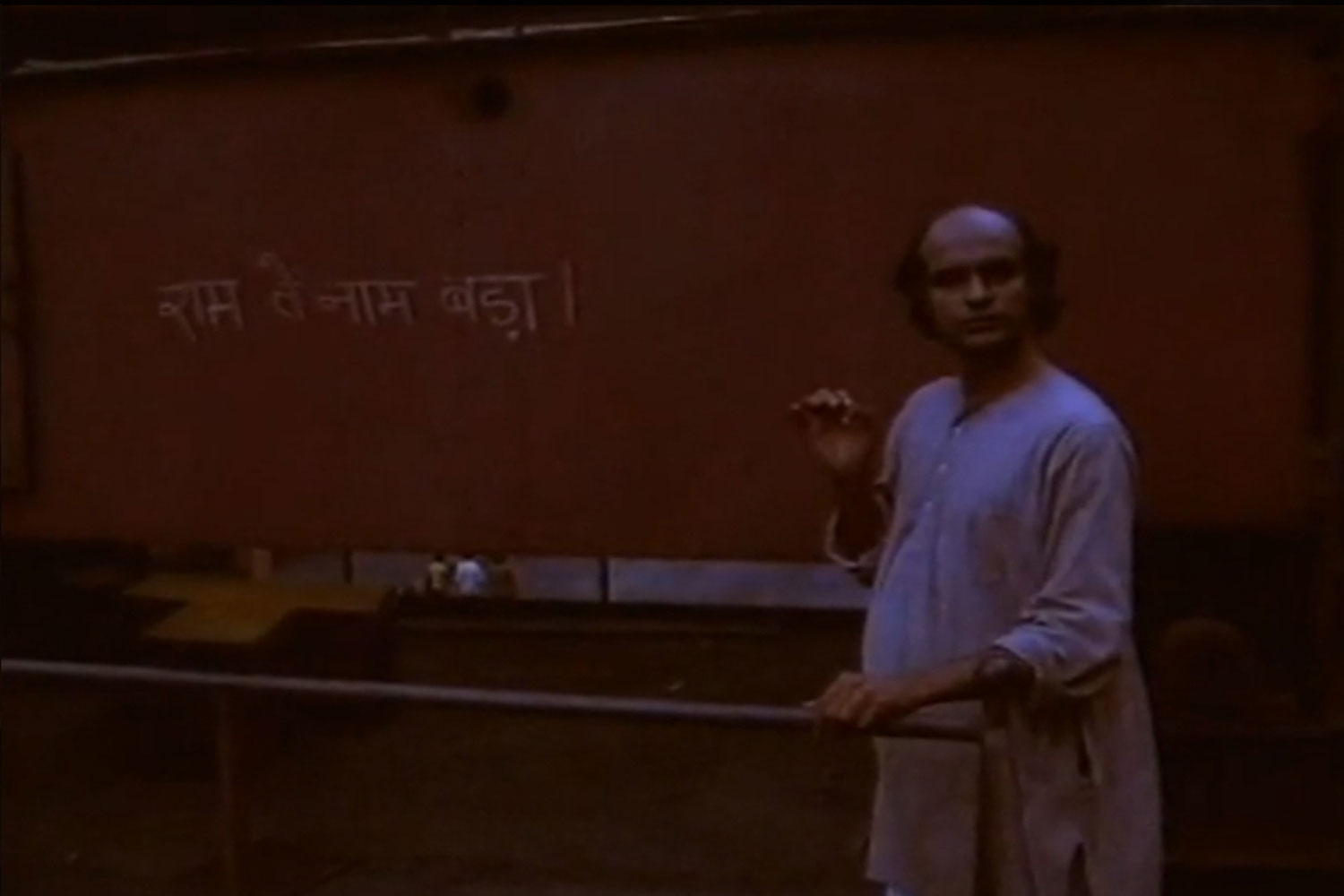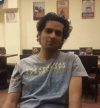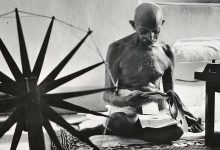The cinematograph provides us with a view of the world that is not a representation of the world outside, but is instead a space-time continuum representing an interiority that captures the internal state of the audience. This continuum is in the form of a sound-image block that provides us with a new understanding of reality. In other words, there is always a film playing beneath the surface, which is an indexical sign to the nature of reality that is both manifested and unmanifested.
The camera represents a consciousness, which is separate from the content (the story). Distanciation in the cinematograph is of key importance so that consciousness can be split from the content. The moment this condition is validated the middle, between start and end, can be established in the same way that a shot is between an ON and an OFF (the recording of the camera). Film-makers, starting from neo-realism (as in Satyajit Ray’s Apu Trilogy), establish one dimension of the manifest reality in order to emphasize the nature of the whole that is simultaneously a manifest reality but is an index for the ultimate reality beneath the surface.
The key term in the cinematograph is conscioushood, which phenomenonology refers to as intentionality. The phenomenological praxis of cinema involves using the cinematographic apparatus to move from phenomena A to phenomena B. The camera is an expanding or contracting consciousness that is an indexical sign for the transformation between phenomenon A to B. Spoken dialogue is used in such a way that language penetrates the consciousness of the spectator so that the subconscious can be brought into view and the cinematograph can move to a point beyond death i.e. the death of the spectator as s/he passes her/his life watching the film.
Cinema concentrates several years of sleeping, waking and dreaming into the runtime of a single film. This is especially possible when it induces a state of deep sleep (the reason for the film being played out at a deliberately slower pace) so that the film is a dream the spectator has in the waking state. Sleep is induced through pre-empted and delayed editing so that time is manipulated and the temporal nature of the film becomes a body in a state of tension. The intentionality of the shot, giving birth to the auteur, is such that it is self-abnegating and the film becomes a space where thing and thought to meet whilst at the same time emphasizing its own aboutness state, outside the domain of intentionality. Mani Kaul’s Satah Se Uthata Aadmi uses this approach to sleeping, waking and dreaming until the narrative settings are reduced and the camera can record the consciousness of the machines in the penultimate scene at the factory.
In order for this to occur, it is of chief importance that the shot be deliberately constructed in such a way that its recording is its own un-construction. Creation and destruction occur simultaneously to address the whole of time and the minimum interval between two durations. Language is used so that cinema becomes a tool for desire, so that language serves as the only medium for communicating the cinematographic relationship between the psychoanalyst (the director) and the analysand (the cinematographic shot constituting actors/objects and utterances in the form of dialogue).
The camera represents the Self so that it is free from causality and all that remains is the relationship between percepts (witnessed whilst dreaming in the waking state) and affects (denying the film the possibility to represent). In other words cinema is a sound-image block that has no representation and is pure potentiality through the seed-image (‘Rosebud’ in Orson Welles’ Citizen Kane) that creates a chronic time spiral. There are two spirals in cinema, the ascending male spiral of consciousness and the descending female spiral of consciousness, which fuse together to form a mandala: a pure icon transcending both denotation and representation.
The primary position of the cinematograph is between camera and object. It is becomes a key to place the camera at a distance so that actors and objects are bodies in a space instead of characters with functions, and the film becomes a quality of attention that can either be concentrated or diluted. The moment the camera is at a distance the interior life of the spectator i.e. consciousness is evoked whilst simultaneously the relationship between sound and image ruptures her/his subconscious. The purpose of this axiom is to allow the spectator to project thought onto the object so that the film makes one realize that it is not the film that moves, but the mind. In other words, a film is a mind at work. Mani Kaul’s early work including films like Uski Roti, Ashad Ka Ek Din and Duvidha established the relationship between camera and object through camera distances (the 7 camera distances in Uski Roti) to eventually address the addition of the new (‘unknown’) foreign object in Duvidha, which is in the form of a ghost.
For most film critics the body in the space is transformed into a character. The relationship between actor, body and character needs to be differentiated here. The actor is a thing, an object, which does not resemble the character s/he plays. However the actor’s body serves as a figuration for the volumetric nature of the frame. The actor and the body are both projections of the camera, whereas the character is a projection of the world, coming from the other direction, allowing cinema to be a world viewed. The ethics between the characters serve as laws to engage the sociopolitical fabric of cinema. The ethics do not directly refer to sociopolitical realities, since taking a shot in itself is a sociopolitical act. What then, do the characters in a film refer to?
A key for analyzing character is to allow a becoming of the narrative-space from the conditions of potentiality of the shot i.e. the location-space. The character is also producing a space as the camera records it in time. The ethics between the characters is “what the film is about” and results in sociopolitical flux that is tilted like a magnet aligning itself to the north and south poles. The intentionality of character construction is the relationship between the intentio and the intentium, such that the director has a gaze (intentio) that is constructed by the character (intentium). Now the director must proceed toward a nullification of the combination of intention and intentium i.e. intentionality so that the Self i.e. the camera can be dissolved. In Satah Se Uthata Aadmi, Mani Kaul gradually limits the narrative-space so that the location space can serve as the line of flight for the film to free itself from representation.
In order to achieve this, there is a withdrawal of interest in “story-telling” so that the camera can serve as a tool to record movement (“motion-picture”/ “movie”). The basis of cinema is not the shot or the cut, but the active ‘life-force’ i.e. breath. Focusing on the breath produces a crisis in action so that the mental image produced by breathing is the image on the screen. In other words, the representations on the screen create a relationship between director, image and audience so that a pure mental image is produced. An example of this would be a scene in which the protagonist chases the antagonist on a bicycle. Here there is a direct correlation between the movement of the wheel of the cycle (rotation), the entire bicycle (translation) and the movement of the film and the spectator’s mind (camera movement may be added as an additional dimension).
This crisis in the action, which produces a mental image, produces a withdrawal of the representation to a state of mind much like a tortoise withdrawing into its shell. Now, all the audience perceives is images of pure time (Gilles Deleuze’s time-image) where breath is out-of-joint resulting in the descending spiral of consciousness becoming pathological. There are two processes here: the transformation of movement into energy followed by the transformation of energy into mind-energy. This in turn creates an expansion of consciousness of the spectator making him into a thinking subject, such that s/he can project their thoughts onto the shot. Yasujiro Ozu achieves this in his later films. This aesthetic finds its Indian equivalent in the closing scenes of Vishnu Mathur’s Pahla Adhyay, in which the image has already occurred, once in the cosmos and for the second time on the screen i.e. able to bring about the ‘power of repetition’ in a single shot.
Once this projection is complete: the film is pure attention, light striking an orifice, captured on film and recorded first by the camera and then by the memory of the spectator. It is at these points that either the light source is shown in the shot or the film is overexposed so that the spectator is reminded that s/he is still awake. The manifest reality of movement is fragmented so that the ultimate reality that is constituted by awareness is brought into play.
This is generally followed by an epilogue in which the function of language serves as a profound mediator of cinema. Cinema is no longer a language, but language mediates cinema, with the ideology of holding the attention of the spectator over duration. Now cinema has transcended death, it has moved from psychopathology to a state beyond death where sleeping, waking and dreaming lead to the ultimate reality.
In this way cinema becomes a transformation of a world-view philosophy of Becoming into a temporal medium of Being. The reason why cinema cannot transcend Being is because of representation, which makes space into a manifest reality. Being is only possible when the visual is static and nothing moves. To transform Being into the absolute reality it would be necessary to shoot an image that represents the unmanifested and not simply denote the unmanifested through language (‘Rosebud’). However, the camera’s relationship to the object before it prevents this unmanifest reality from being represented: the “direct representation of time” is still a manifest reality, and the question is: can a shot document the Absolute?






Leave a Reply
You must be logged in to post a comment.